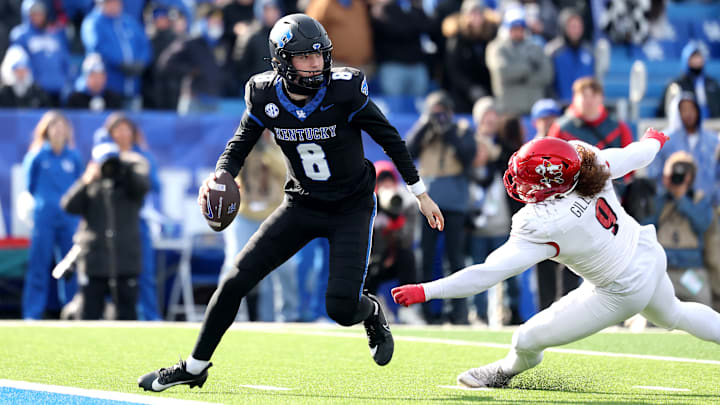College athletics are a mess, and we are not even talking NIL this time. When you have one team travelling across the country to play an in conference game, it is beyond rediculous. Standford is near the Pacific Ocean, but yet they play in the Atlantic Coast Conference. Let that bit sink in.
Football and basketball have long been a regionally woven game with pride, historic rivalries, and passionate fanbases. Now, it is more about the money being made by the conferences. Recent realignments driven by financial incentives have stretched this fabric thin, leading to cross-country matchups that defy geography and dilute traditional rivalries. To restore the essence of college football, a proposed realignment emphasizes regional coherence, rekindles storied rivalries, and balances competitive integrity.
Power Conferences

1. Southeast Conference (SEC) – 16 Teams
Teams: Alabama, Auburn, Florida, Georgia, Kentucky, LSU, Mississippi, Mississippi State, South Carolina, Tennessee, Vanderbilt, Clemson, Florida State, Georgia Tech, Miami, South Florida
Rationale: Maintains the core of the traditional SEC, integrating Clemson and Florida State for their competitive prowess and regional fit. Georgia Tech and Miami enhance the Florida-Georgia corridor, while South Florida brings a burgeoning market and recent success.
Key Rivalries Preserved: Alabama-Auburn (Iron Bowl), Florida-Florida State, Georgia-Georgia Tech, Clemson-South Carolina.

2. Mid-Atlantic Coast Conference (MACC) – 16 Teams
Teams: Boston College, Syracuse, Pittsburgh, Penn State, Maryland, Virginia, Virginia Tech, North Carolina, NC State, Duke, Wake Forest, Louisville, West Virginia, Cincinnati, UCF, Rutgers
Rationale: Consolidates teams from the Northeast and Mid-Atlantic, reuniting Penn State and Rutgers with regional counterparts. The inclusion of West Virginia and Cincinnati revives classic rivalries, while UCF adds a strong Florida presence.
Key Rivalries Preserved: Pitt-West Virginia (Backyard Brawl), Virginia-Virginia Tech, North Carolina-NC State, Louisville-Cincinnati.

3. Midwest Conference (Big Ten) – 16 Teams
Teams: Ohio State, Michigan, Michigan State, Indiana, Purdue, Illinois, Northwestern, Wisconsin, Minnesota, Iowa, Nebraska, Kansas, Kansas State, Iowa State, Missouri, Notre Dame
Rationale: Centers around the traditional Big Ten heartland, integrating Kansas, Kansas State, and Iowa State to rejuvenate regional rivalries. Notre Dame's full membership solidifies its historic ties within the Midwest.
Key Rivalries Preserved: Ohio State-Michigan (The Game), Notre Dame-Michigan, Missouri-Kansas (Border War), Iowa-Nebraska.

4. Southwest/West Conference (Big 12) – 16 Teams
Teams: Texas, Texas A&M, Oklahoma, Oklahoma State, Baylor, TCU, Houston, Texas Tech, Arkansas, SMU, Tulsa, UTSA, Rice, North Texas, Memphis, Tulane
Rationale: Reunites Texas and Oklahoma with their historic rivals, incorporating Arkansas to revive Southwest Conference traditions. The addition of competitive Group of 5 programs like Memphis and Tulane enhances the conference's depth.
Key Rivalries Preserved: Texas-Texas A&M (Lone Star Showdown), Oklahoma-Oklahoma State (Bedlam), Baylor-TCU, Arkansas-Texas.
Group of 5 Conferences

5. Pacific Conference (Pac-12 Reborn) – 14 Teams
Teams: Stanford, California, UCLA, USC, Oregon, Oregon State, Washington, Washington State, Boise State, Fresno State, San Diego State, Colorado, Colorado State, Utah
Rationale: Reestablishes the Pac-12's West Coast identity, bringing back traditional rivalries and integrating strong programs from the Mountain West to enhance competitiveness.
Key Rivalries Preserved: Stanford-California (Big Game), UCLA-USC, Oregon-Washington, Colorado-Utah.

6. Mountain West Conference – 14 Teams
Teams: Arizona, Arizona State, BYU, Utah State, Wyoming, Air Force, New Mexico, UNLV, Nevada, San Jose State, Hawaii, UTEP, New Mexico State, Montana State
Rationale: Combines remaining Mountain West teams with Arizona and Arizona State for regional coherence. The inclusion of UTEP, New Mexico State, and Montana State strengthens geographic ties.
Key Rivalries Preserved: Arizona-Arizona State, BYU-Utah State, New Mexico-New Mexico State.

7. Mid-American Conference (MAC) – 14 Teams
Teams: Akron, Ball State, Bowling Green, Buffalo, Central Michigan, Eastern Michigan, Kent State, Miami (OH), Northern Illinois, Ohio, Toledo, Western Michigan, James Madison, Marshall
Rationale: Maintains the MAC's Midwest foundation, integrating James Madison and Marshall to bolster competitiveness and regional alignment.
Key Rivalries Preserved: Toledo-Bowling Green, Miami (OH)-Ohio, James Madison-Marshall.

8. Sun Belt Conference – 14 Teams
Teams: Appalachian State, Coastal Carolina, Georgia Southern, Georgia State, Old Dominion, Troy, South Alabama, Louisiana, UL-Monroe, Southern Miss, Texas State, Charlotte, East Carolina, Liberty
Rationale: Focuses on the South and Southeast, incorporating teams like Charlotte, East Carolina, and Liberty to enhance regional rivalries and market presence.
Key Rivalries Preserved: Appalachian State-Georgia Southern, Louisiana-UL-Monroe, Coastal Carolina-Liberty.
Addressing Stanford and other West Coast schools
Stanford's move to the ACC, alongside Cal and SMU, was a reactionary measure following the Pac-12's collapse. This cross-country alignment disrupts traditional rivalries and imposes extensive travel burdens. By reinstating Stanford in a revitalized Pac-12, the proposal restores its historic rivalries and regional integrity.
Benefits of the Proposed Realignment
- Regional Cohesion: Aligning teams geographically reduces travel costs and fosters local fan engagement.
- Rivalry Restoration: Reviving historic matchups reignites fan passion and preserves college football's rich traditions.
- Competitive Balance: Integrating strong Group of 5 programs into Power conferences ensures a more balanced and competitive landscape.
- Pac-12 Revival: Reconstructing the Pac-12 with traditional and competitive programs safeguards the West Coast's football heritage.
Challenges and considerations
- Media Contracts: Existing agreements may complicate realignment efforts, necessitating renegotiations or legal resolutions.
- Playoff Access: Ensuring equitable playoff opportunities for all conferences remains a critical consideration.
- Fan Resistance: Transitioning from traditional conference identities may face opposition, requiring transparent communication and emphasis on restored rivalries.
- Playoff Access: Ensuring equitable playoff opportunities for all conferences remains a critical consideration.
- Fan Resistance: Transitioning from traditional conference identities may face opposition, requiring transparent communication and emphasis on restored rivalries.
- Travel Logistics: While regional alignment mitigates excessive travel, some challenges persist, particularly for geographically isolated teams but it is much better.
Implementation strategy
A phased approach over 2-3 years allows for logistical adjustments, scheduling realignments, and financial planning. Conferences could adopt a 9-game schedule (8 conference games plus 1 permanent rival) to maintain frequent matchups and support a 12-team playoff structure with automatic bids for conference champions.
We just want to clean the mess money has made of college athletics, it starts with common sense conferences.
